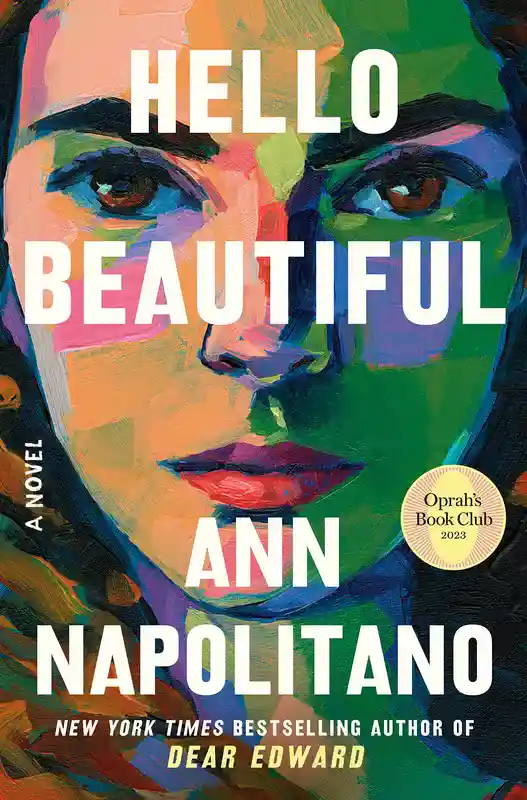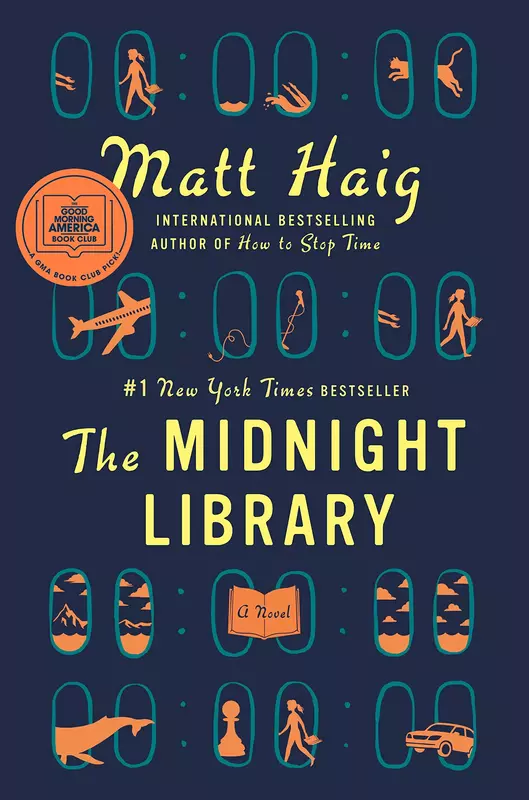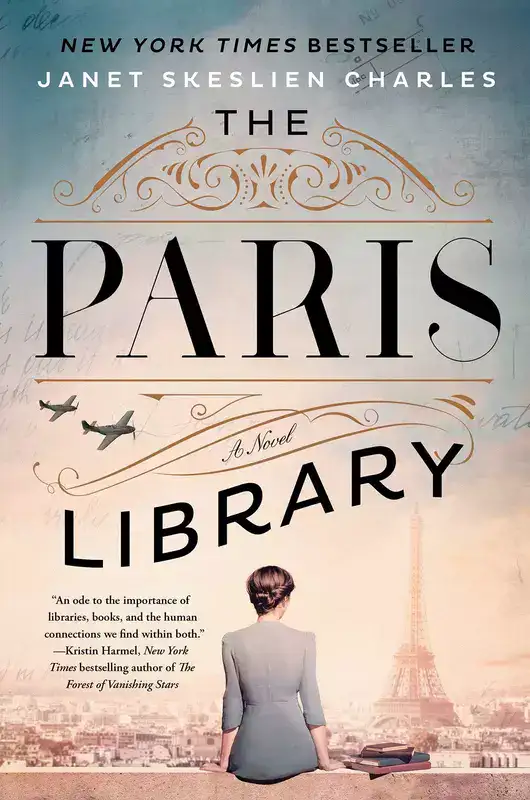This post may contain affiliate links. Read more here.
Book club discussion questions for The Lamplighters by Emma Stonex delve into the complex and haunting stories of three lighthouse keepers who disappeared without a trace, leaving their loved ones struggling to find closure and understand what really happened on that fateful night.
This captivating and thought-provoking novel explores themes of identity, loss, and the cost of keeping secrets as it tells the intertwining stories of the missing men and the people they left behind. With vivid descriptions and rich characterizations, The Lamplighters raises important questions about the meaning of home, the limits of human connection, and the complexities of the human psyche.
In this post, we will delve into the most important book club questions for The Lamplighters that will help you to explore the novel’s themes and characters in depth. Whether you are a seasoned book club member or new to the world of literary discussions, this detailed reading guide includes more than twenty book club discussion questions that will guide you in a stimulating conversation about this haunting and beautifully written novel.
So grab a cup of tea and settle in for a discussion of The Lamplighters that is sure to illuminate its many layers of meaning. ❤️
The Synopsis
Inspired by a haunting true story, a gorgeous and atmospheric novel about the mysterious disappearance of three lighthouse keepers from a remote tower miles from the Cornish coast–and about the wives who were left behind.
What strange fate befell these doomed men? The heavy sea whispers their names. Black rocks roll beneath the surface, drowning ghosts. And out of the swell like a finger of light, the salt-scratched tower stands lonely and magnificent.
It’s New Year’s Eve, 1972, when a boat pulls up to the Maiden Rock lighthouse with relief for the keepers. But no one greets them. When the entrance door, locked from the inside, is battered down, rescuers find an empty tower. A table is laid for a meal not eaten. The Principal Keeper’s weather log describes a storm raging round the tower, but the skies have been clear. And the clocks have all stopped at 8:45.
Two decades later, the keepers’ wives are visited by a writer determined to find the truth about the men’s disappearance. Moving between the women’s stories and the men’s last weeks together in the lighthouse, long-held secrets surface and truths twist into lies as we piece together what happened, why, and who to believe.
In her riveting and suspenseful novel, Emma Stonex writes a story of isolation and obsession, of reality and illusion, and of what it takes to keep the light burning when all else is swallowed by dark.
In love with books? Try audio books or writing classes
for free for 30 days.✨
Book Club Questions for The Lamplighters
I hope you and your book club will enjoy my discussion reading guide for The Lamplighters by Emma Stonex. ✨
- The Lamplighters is a mesmerizing literary masterpiece that masterfully treads the fine line between reality and fantasy, with scenes that seamlessly blend the two worlds. How does Emma Stonex use her writing skills to craft such an impeccable balance between the real and the imagined? How does her writing style add to the overall eerie atmosphere of the book? How do the vivid descriptions and sensory details enhance the reader’s experience and make the story come to life?
- The disappearance of Arthur, Bill, and Vince on the Maiden is shrouded in mystery, with multiple versions of events and conflicting testimonies from the women left behind. How does the ambiguity of the men’s disappearance contribute to the overall suspense and intrigue of the novel? Do you think there is a clear answer to what happened that night, or is it left up to the reader’s interpretation?
- Emma Stonex employs various narrative techniques, including first-person monologues, first-person accounts, and third-person narration, to create complex and multidimensional characters. How do the characters’ direct accounts and thoughts differ from how they are portrayed in third-person narration? How does this shifting perspective affect the reader’s overall experience of the story, and what does it reveal about the nature of perception and identity?
- The conflicting perspectives of Bill, Helen, and Jenny create a fascinating narrative in The Lamplighters. But is it possible to discern the truth? As Helen says, “I don’t know what the truth is. I don’t know if any of us do.” Do you think it’s possible to have an absolutely true version of any story, or is truth subjective and malleable?
- Jenny shares a secret with her daughter Hannah about Bill’s disappearance. If you were Hannah, how would you have reacted? Is there such a thing as an unforgivable act, and does it change if it’s committed by a family member?
- In the novel, the lighthouse keepers are portrayed as being isolated from the rest of society. How do you think this isolation affects the characters and their relationships with each other? Are there any parallels to be drawn with our own experiences of isolation during the pandemic?
- The sea is a recurring motif throughout the novel, with its many faces and moods. How does the sea function as a symbol in the story? Do you think the sea represents something specific, or is it open to interpretation?
- Stonex uses various narrative techniques, such as flashbacks, multiple perspectives, and interviews, to tell the story of the missing lighthouse keepers. How did these techniques contribute to your reading experience? Did they help or hinder your understanding of the story and its characters?
- The Lamplighters is set in two different time periods, 1972 and the present day. How does Stonex use these two different time frames to explore the themes of the novel? Are there any ways in which the two time periods mirror each other?
- Helen and Arthur’s loss creates a chasm in their relationship and their relationship to the sea. How does their grief reshape their marriage, and how do they support each other through it? How is grief expressed in The Lamplighters, and what grace do we owe each other in the face of it?
- Symbols and portents, such as the White Rook and the Silver Man, play a significant role in The Lamplighters. What do these symbols represent, and how do they enhance the reader’s understanding of the story’s underlying messages? How does Stonex’s use of symbolism and foreshadowing affect the reader’s perception of the characters and their relationships?
- The Maiden, a character in the book, represents the tower and the men who disappeared from it. Why do you think Stonex chose to name her the Maiden? How does the Maiden’s role compare to the sea’s role in the book? Do you think the Maiden and the women left behind were also victims of the men’s disappearance?
- Jory’s description of the sea having two faces implies that the sea is a character in the novel. What are its two faces, and how do they affect each character’s journey? How does the sea’s character compare to the Maiden’s character, and do you think they were left behind when the men disappeared?
- The Lamplighters explores the complexities and compromises of marriage through its various characters and relationships. How do the characters’ personal struggles and compromises affect their relationships, and what can we learn from their experiences? How does the portrayal of marriage in the book compare to your own experiences or observations of relationships?
- Dan Sharp, the bestselling author of naval action thrillers, plays a significant role in the story as the writer who interviews the women left behind by the missing men. Do you think The Lamplighters is meant to be his book, and if so, how does that shift the reader’s perspective on the events of the novel? How does the presence of a writer within the story comment on the nature of storytelling and the power dynamics between the author, the characters, and the reader?
- The disappearance of the three men remains a mystery, and as the novel progresses, different versions of events are presented. However, all these versions have flaws and inconsistencies. Based on the evidence presented, what do you believe happened that night? Do you think there is a clear answer? For example, as Arthur says, “You think you’ve got the story straight in your head, and then someone says something that throws you off course.”
- The Lamplighters explores various forms of grief and loss, including the loss of a loved one, the loss of identity, and the loss of a way of life. Jory’s quote, “there’s light and dark in the world,” reflects the novel’s theme that we must accept both the light and dark in life. What do you think the author is trying to say about how we understand and cope with loss? Do you agree that we must embrace both the light and dark aspects of life?
- The characters in The Lamplighters are complex and nuanced, and some elements of their personalities and actions are open to interpretation. Do you think all the characters in the novel were based on real people or were some elements of the characters’ imagination? For instance, Helen imagines what Bill would say to her, and Jenny invents an imaginary friend to cope with her husband’s disappearance.
- The Lamplighters explores the impact of presumptions and preconceived notions on the characters’ relationships and interactions. How does the societal stigma surrounding Vince’s criminal history influence the investigation into the men’s disappearance and the media coverage of the event? How does Stonex’s portrayal of these biases and assumptions comment on larger societal issues, and how have you experienced similar biases in your own life?
- The female characters in The Lamplighters each have their own ideas of what it means to be a good wife, mother, and friend. Helen’s grief makes her pull away from Jenny, while Jenny believes in leaning on each other during difficult times. Did any of these perspectives on womanhood and female relationships resonate with you? Were any frustrating or surprising?
- Helen believes that time heals all wounds, allowing people to look back at their experiences with a sense of distance. How has time affected each woman’s perspective of the men’s disappearance and of each other? Do you agree that time heals all wounds, or are some things unforgivable?
- The Lamplighters is based on the real-life unresolved disappearance of lighthouse keepers. How did this detail affect your reading of the novel? Do you believe a mystery must be solved for a story to be satisfactory, and does it change if the mystery is based on a real-life event?
- The novel presents two distinct perspectives: the male perspective captured in 1972 and the female perspective captured in modern times. Do you think the author has made a statement by presenting them in this way? How do you think the gender divide affects the characters’ experiences and perceptions of the world around them? For example, as Helen says, “It wasn’t the sort of thing that women talked about back then.”
- The Lamplighters portrays various marriages and relationships, each with its own unique challenges and dynamics. Did you find any of the characters’ relationships particularly relatable? Which marriage/relationship did you feel was the most understandable? For instance, Hannah and Jenny’s relationship is characterized by tension and misunderstanding, while Arthur and Helen’s relationship is marked by grief and distance.
- The novel addresses the issue of stigma and prejudice against certain members of the community, such as those who are deemed “different” or “other.” How do you think the author helps readers understand these characters’ particular backstories and experiences? For example, Michelle’s experience as an outsider in the male-dominated world of lighthouse keepers is explored, and her backstory is revealed gradually throughout the novel.
- The novel features several strong female characters, each with their own unique perspectives and experiences. How does Stonex explore the complexities of womanhood and female relationships in the book? Are there any particular scenes or interactions between the female characters that stood out to you?
- The Lamplighters is a story of reconciliation, as characters come to terms with their pasts and make peace with each other. Did you feel that everyone achieved reconciliation by the end of the book? How have the women’s relationships shifted, if at all? Did you find the ending satisfying?
Selected Reviews for The Lamplighters
“The Lamplighters is magnificent. It is a debut novel as compelling as a classic ghost story; it is a locked-room mystery that exposes every secret we wish to keep safe at home. This book will take hold of you, guide you over the waves, and then plunge you under. Read it.” – Julia Phillips
“Superbly accomplished…The Lamplighters is a whodunnit, horror novel, ghost story and fantastically gripping psychological investigation rolled into one. It is also a pitch-perfect piece of writing.” —The Guardian
“Stonex’s unique tale juxtaposes oddly compelling reality—the daily challenges of being a lighthouse keeper for the men and their families—against a series of strange, poignant, near-mystical happenings that will pull readers in and keep them mesmerized right to the end.” –Booklist
“Transported me effortlessly…Haunting, harrowing and heartbreaking, this is a novel that will stay with you.” –-Ashley Audrain
Additional Recommendations
Hope you enjoyed my book club discussion questions and reading guide for The Lamplighters by Emma Stonex!
Here are some more of my book club recommendations:
Hello Beautiful by Ann Napolitano
William Waters grew up in a house silenced by tragedy, where his parents could hardly bear to look at him, much less love him—so when he meets the spirited and ambitious Julia Padavano in his freshman year of college, it’s as if the world has lit up around him. With Julia comes her family, as she and her three sisters are inseparable: Sylvie, the family’s dreamer, is happiest with her nose in a book; Cecelia is a free-spirited artist; and Emeline patiently takes care of them all. With the Padavanos, William experiences a newfound contentment; every moment in their house is filled with loving chaos.
But then darkness from William’s past surfaces, jeopardizing not only Julia’s carefully orchestrated plans for their future, but the sisters’ unshakeable devotion to one another. The result is a catastrophic family rift that changes their lives for generations. Will the loyalty that once rooted them be strong enough to draw them back together when it matters most?
An exquisite homage to Louisa May Alcott’s timeless classic, Little Women, Hello Beautiful is a profoundly moving portrait of what is possible when we choose to love someone not in spite of who they are, but because of it.
The Midnight Library by Matt Haig
The dazzling reader-favorite about the choices that go into a life well lived, from the acclaimed author of How To Stop Time and The Comfort Book.
Somewhere out beyond the edge of the universe there is a library that contains an infinite number of books, each one the story of another reality. One tells the story of your life as it is, along with another book for the other life you could have lived if you had made a different choice at any point in your life. While we all wonder how our lives might have been, what if you had the chance to go to the library and see for yourself? Would any of these other lives truly be better?
In The Midnight Library, Matt Haig’s enchanting blockbuster novel, Nora Seed finds herself faced with this decision. Faced with the possibility of changing her life for a new one, following a different career, undoing old breakups, realizing her dreams of becoming a glaciologist; she must search within herself as she travels through the Midnight Library to decide what is truly fulfilling in life, and what makes it worth living in the first place.
The Paris Library by Janet Skeslien Charles
Paris, 1939: Young and ambitious Odile Souchet seems to have the perfect life with her handsome police officer beau and a dream job at the American Library in Paris. When the Nazis march into the city, Odile stands to lose everything she holds dear, including her beloved library. Together with her fellow librarians, Odile joins the Resistance with the best weapons she has: books. But when the war finally ends, instead of freedom, Odile tastes the bitter sting of unspeakable betrayal.
Montana, 1983: Lily is a lonely teenager looking for adventure in small-town Montana. Her interest is piqued by her solitary, elderly neighbor. As Lily uncovers more about her neighbor’s mysterious past, she finds that they share a love of language, the same longings, and the same intense jealousy, never suspecting that a dark secret from the past connects them.
“A love letter to Paris, the power of books, and the beauty of intergenerational friendship” (Booklist), The Paris Library shows that extraordinary heroism can sometimes be found in the quietest places.
Thank you for reading my book club discussion questions and as always, happy reading! ❤️


